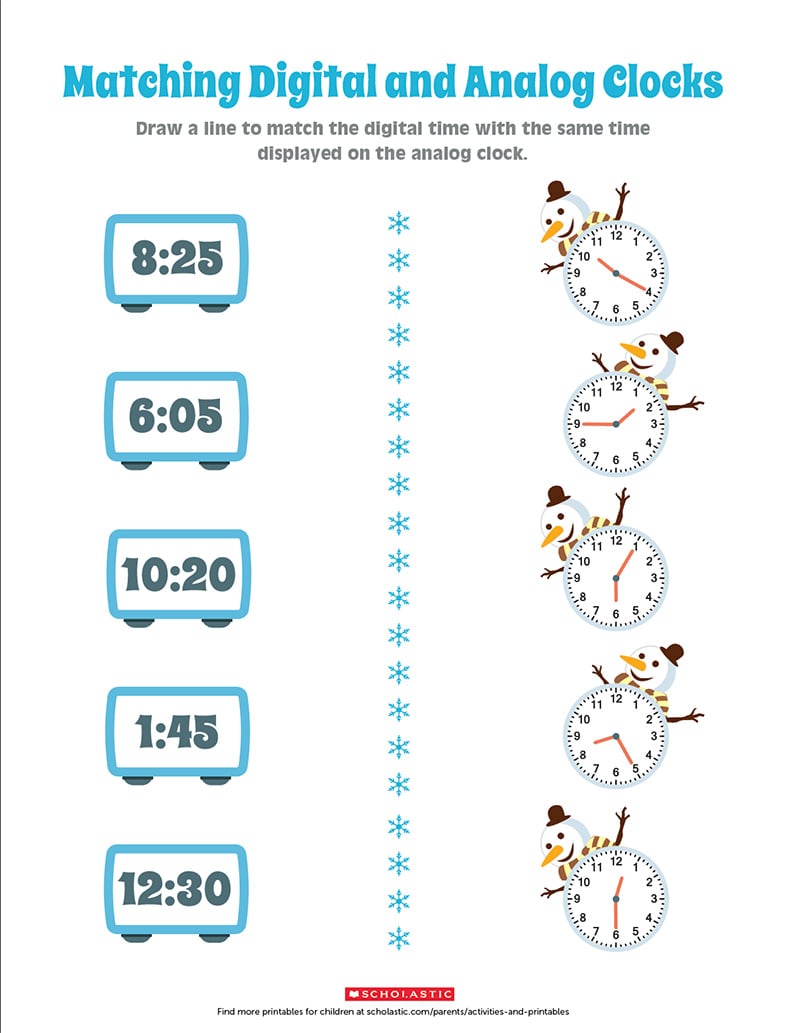In today's digital world, is it still important for young children to learn how to read an analog clock? I strongly believe the answer is YES!
Reading a clock provides children with a visual representation of time passing. An analog clock allows young children to really see when five minutes has passed, which isn't possible with a digital clock. Watching the hands of a clock move can help your child better understand the concept of elapsed time. An analog clock also helps children understand language such as "quarter past" or "quarter of" by seeing 60 minutes actually "cut" into four equal quarters. Teaching young children to read an analog clock builds number sense and a strong sense of time.
Of course, your child also needs to be able to confidently read a digital clock as well. Use this matching time printable to help your child connect these two ways to convey the time.
Being able to tell time with either a digital or analog clocks encourages flexible thinking. As your child matches the clocks on this printable, encourage him to talk about time and how times passes.
Featured Photo Credit: © BartCo/iStockphoto


